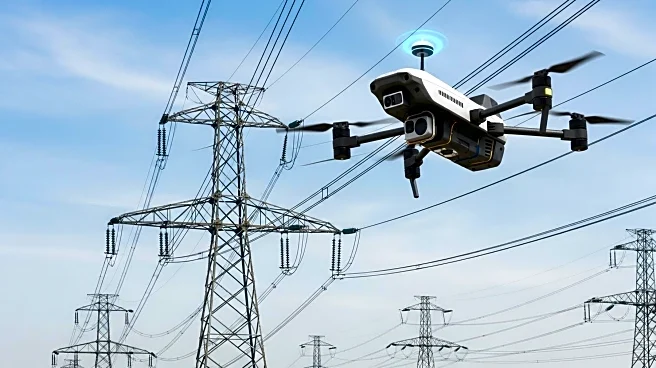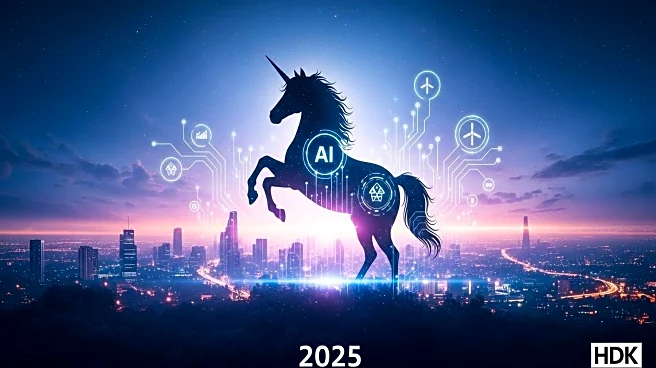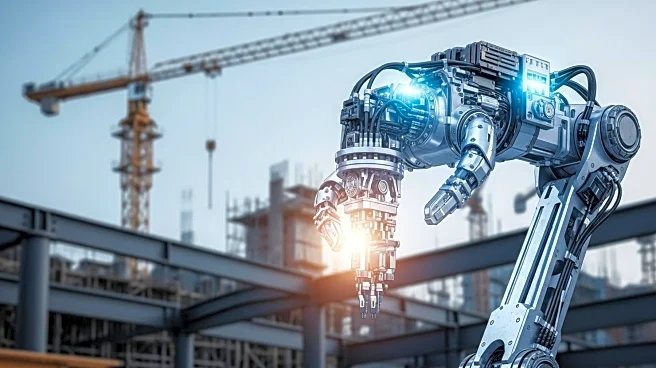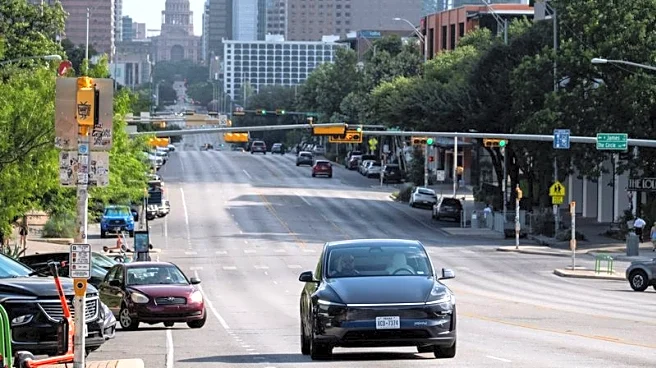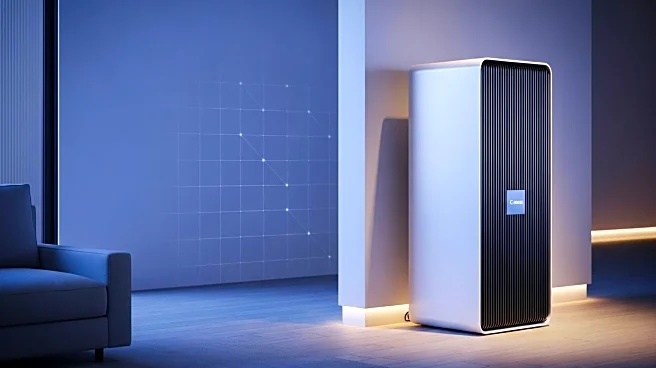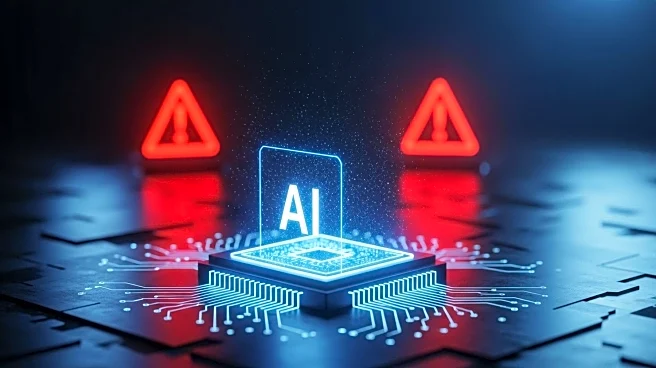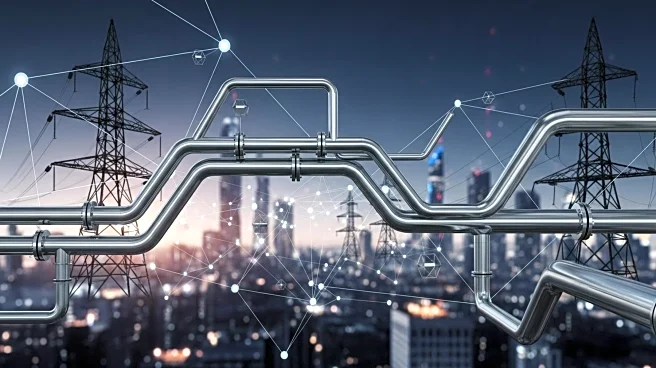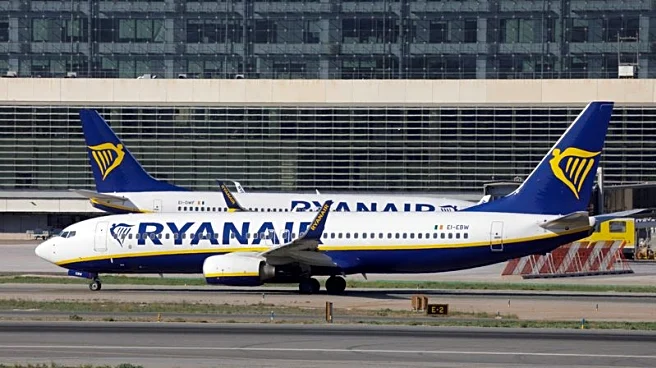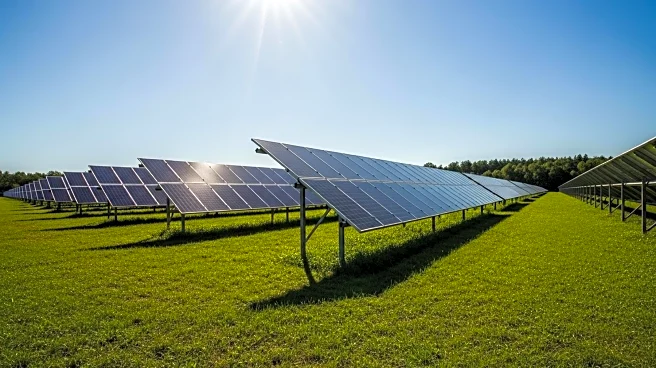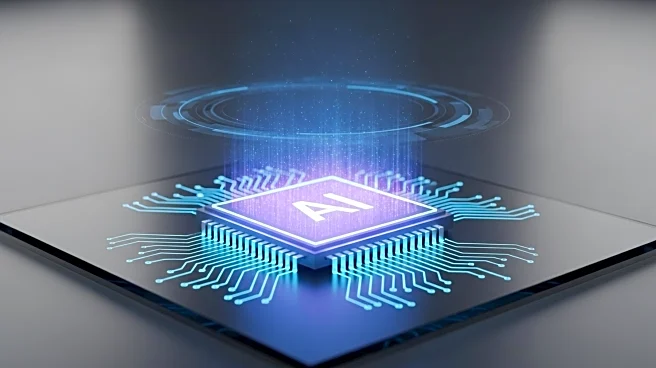What's Happening?
Autonomous drones are transforming the inspection of long-distance transmission lines, offering a safer, faster, and more cost-effective alternative to traditional methods. These drones utilize advanced sensors, GPS, and artificial intelligence to autonomously navigate and inspect infrastructure, significantly reducing the need for human intervention in hazardous environments. The integration of drone technology with predictive maintenance allows utilities to detect early signs of equipment wear and prioritize maintenance tasks, thereby preventing outages. According to the Electric Power Research Institute, drones provide a continuous stream of data that supports predictive maintenance strategies. This technological advancement is crucial as the global grid is expected to double in size by 2040 to meet increasing energy demands.
Why It's Important?
The adoption of autonomous drones in transmission line inspections is significant for several reasons. Firstly, it enhances safety by minimizing the need for workers to operate in dangerous conditions, such as climbing towers or flying helicopters near power lines. Secondly, it offers substantial cost savings, as drone inspections are far less expensive than helicopter-based methods. Additionally, drones equipped with high-resolution cameras and sensors provide high-quality data, enabling utilities to identify potential issues like corrosion or overheating before they lead to failures. This proactive approach not only improves operational efficiency but also supports the transition to renewable energy by facilitating the maintenance of infrastructure that connects remote solar and wind farms to the grid.
What's Next?
As regulatory frameworks evolve, the use of autonomous drones is expected to expand. The Federal Aviation Administration in the U.S. has already granted waivers for utilities to operate drones beyond visual line of sight, and similar progress is being made in Europe. This regulatory shift will enable more utilities to fully leverage drone technology for inspections. Future transmission line inspections are likely to integrate drones with AI, predictive analytics, and digital twin technology, allowing for constant network monitoring and early issue resolution. As these technologies advance, drones will become an integral part of modern grid maintenance, supporting a resilient and efficient energy system.
Beyond the Headlines
The integration of autonomous drones into transmission line inspections also raises important considerations regarding data privacy and security. As drones collect vast amounts of data, utilities must ensure that this information is protected against cyber threats. Additionally, the shift towards automated inspections may impact employment in traditional inspection roles, necessitating workforce retraining and adaptation. Furthermore, the environmental benefits of drone inspections, such as reduced carbon emissions from fewer helicopter flights, align with broader sustainability goals in the energy sector.
